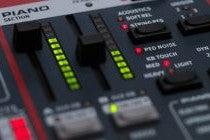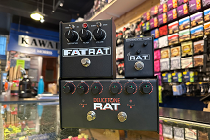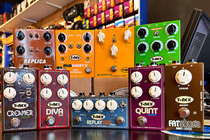Effects pedals are like snowflakes, every one is special. While this may be a gross oversimplification, when it comes to power and power supplies, It's a maxim well worth bearing in mind. Fortunately we at Rose Morris are here to walk you through it.
First off. What does it all mean? When referring to effects, power means Current and Voltage and both are important when choosing how to power your pedals.
Pedals are predominately powered by 9 Volts. However some can take 12v or 18v. This is important to bear in mind because if you use a power supply where the voltage is too high, it could easily turn your shiny new overdrive into a stylish but expensive paperweight.
Current draw is also important. The amount of current a pedal draws is measured in milliamps (ma) and this is usually displayed on the pedal itself. A power supply will have a maximum ma output it can provide. If your pedal's draw exceeds it, it wont work.
The last thing you need to consider is the polarity. Most pedals take a center negative polarity adapter. However, if it's different, you wont be able to daisy chain (power multiple units with one power supply) with other pedals.
With all this in mind. What's the best way to power your effects? The Diago Micropower is a simple and flexible way of powering multiple pedals at once. However some people like the way a 9v battery sounds, particularly with drive and fuzz pedals. The important thing is you know the power requirements of your board.










